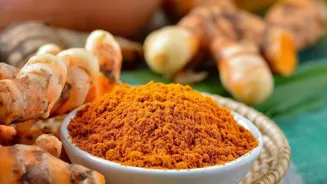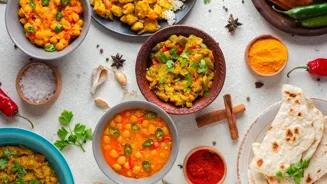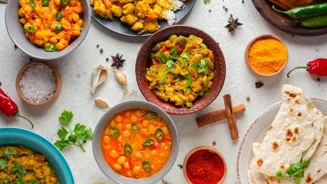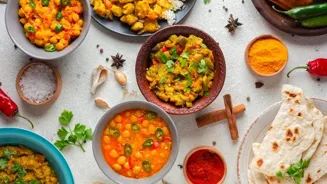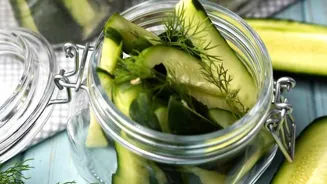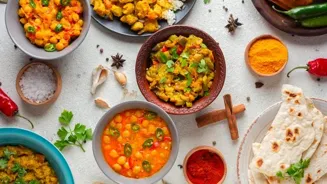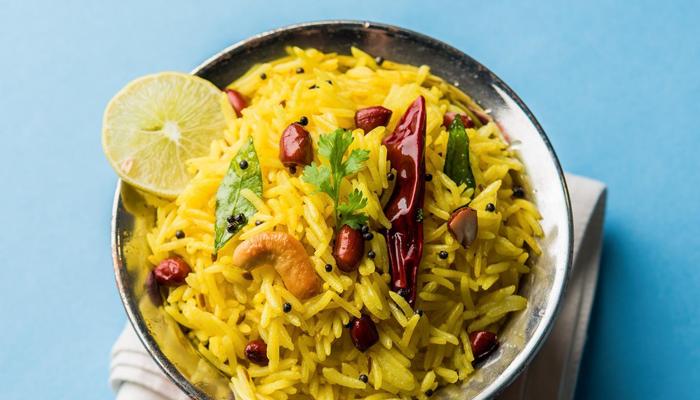Unlock the Secrets of Indian Cooking with 5 Essential Techniques! Dive into the world of flavors
India, a land of vibrant colors, diverse cultures, and a rich culinary heritage, boasts a cuisine that is as complex
as it is delicious. Mastering Indian cooking isn't just about following recipes; it's about understanding the core techniques that unlock the true essence of Indian flavors.
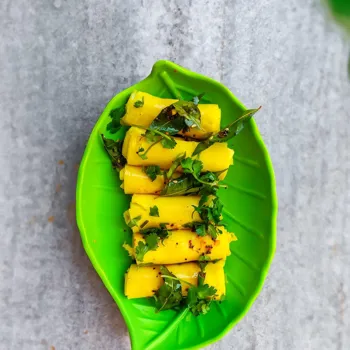
From the sizzle of tempering to the slow simmer of braising, these time-honored methods are the key to creating authentic and unforgettable vegetarian Indian dishes.
Let's explore five essential cooking techniques that will elevate your culinary skills and bring the taste of India to your home kitchen.
Tempering (Tadka/Chonk): The Soul of Indian Cuisine
Tempering, also known as tadka, chonk, or vaghar, is arguably the most crucial technique in Indian cooking. It involves heating oil or ghee and then adding a combination of whole spices, such as mustard seeds, cumin seeds, dried red chilies, and curry leaves.
As the spices hit the hot oil, they release their aromatic oils, infusing the fat with intense flavor. This flavorful mixture is then poured over a dish, adding a final layer of complexity and depth. Tempering is often used to finish lentils (dal), vegetables, and even yogurt-based dishes.
The key to a successful tadka is to heat the oil just right – too hot, and the spices will burn, resulting in a bitter taste; too cold, and they won't release their full flavor potential. The sizzle and pop of the spices is your cue that the tadka is ready to work its magic.
Tempering is not just about adding flavor; it also enhances the visual appeal of the dish. The vibrant colors of the spices against the backdrop of the dish create a beautiful contrast, making it even more appetizing.
Moreover, some spices, like asafoetida (hing), are believed to aid digestion when tempered in oil. Different regions of India have their own unique variations of tadka, using different combinations of spices and ingredients.
For example, in South India, mustard seeds and curry leaves are almost always included, while in North India, cumin seeds and dried red chilies are more common. Experimenting with different combinations of spices is a great way to discover your own signature tadka.
To temper like a pro, start by heating the oil or ghee in a small pan or ladle. Once the oil is hot, add the whole spices in the order that they take to cook, with the ones that take the longest going in first. For example, add mustard seeds first, followed by cumin seeds, and then asafoetida.
Be careful not to overcrowd the pan, as this will lower the temperature of the oil and prevent the spices from cooking properly. Once the spices have sizzled and released their aroma, immediately pour the tadka over the dish.
Cover the dish immediately to trap the aroma and let the flavors meld together. You will notice that this small technique makes a huge difference to the final dish. The flavor from this process enhances what would have been regular dish into something truly extra ordinary.
Bhunao (Sautéing): Building Flavor from the Base
Bhunao, or sautéing, is the foundation upon which many Indian curries are built. It involves slowly cooking aromatics like onions, garlic, ginger, and chilies in oil or ghee until they soften, caramelize, and release their flavors.
The process of bhunao is crucial for building depth and complexity in the curry. As the aromatics cook, their sugars caramelize, creating a rich, sweet, and savory base that forms the backbone of the dish. The key to a good bhunao is patience.
It's important to cook the aromatics slowly over medium heat, stirring frequently to prevent them from burning. The goal is to achieve a deep golden-brown color and a soft, almost melting texture.
The bhunao is also the stage where ground spices are added to the curry.
The heat helps to bloom the spices, releasing their essential oils and intensifying their flavor. It's important to add the spices at the right time, as overcooking them can result in a bitter taste. Generally, it's best to add the spices after the aromatics have softened and started to caramelize.
This allows the spices to meld with the other flavors and create a harmonious blend. The order in which you add the spices also matters.
Start with the spices that need the most heat to release their flavor, such as turmeric and coriander, and then add the more delicate spices, such as garam masala and cardamom, towards the end.
Mastering the bhunao technique is essential for creating authentic Indian curries.
It's the foundation upon which all other flavors are built. By taking the time to properly sauté the aromatics and bloom the spices, you can create a dish that is bursting with flavor and complexity.
The color, smell and texture tell you the doneness of the recipe, which will become second nature with practice. Remember, low and slow is the key to mastering this technique. Watch the pan and add the spices in the appropriate order for a delightful taste.
Dum Cooking: The Art of Slow Simmering
Dum cooking is a slow-cooking technique that involves sealing food in a heavy-bottomed pot and cooking it over low heat for an extended period. This method allows the flavors to meld together and the ingredients to become incredibly tender.
Dum cooking is often used to prepare biryanis, kormas, and other dishes that require a long cooking time. The key to dum cooking is to create a tightly sealed pot. This can be achieved by using a tight-fitting lid or by sealing the pot with dough.
The dough creates an airtight seal that prevents steam from escaping, allowing the food to cook in its own juices.
The slow, gentle heat of dum cooking allows the flavors of the spices and ingredients to slowly infuse the dish. This results in a dish that is incredibly flavorful and aromatic.
The long cooking time also allows the ingredients to become incredibly tender, melting in your mouth with each bite. Dum cooking is a time-honored technique that has been passed down through generations. It requires patience and attention to detail, but the results are well worth the effort.
The technique requires focus on monitoring the heat, as too much heat can cause the food to burn, while too little heat can result in a dish that is undercooked.
While traditionally done over a charcoal fire, you can easily adapt dum cooking to your home kitchen by using a heavy-bottomed pot and a low heat setting on your stovetop. Simply layer your ingredients in the pot, seal it tightly, and let it simmer for several hours.
The aroma that fills your kitchen as the dish cooks is a testament to the magic of dum cooking. While patience is key, this method gives you time to do other things while the food cooks on its own.
Roasting (Bhunana): Dry Heat for Enhanced Flavor
Roasting, or bhunana, is a technique used to dry-roast spices, nuts, or flours in a pan over medium heat. This process enhances their flavor and aroma, adding a unique dimension to Indian dishes.
Dry-roasting spices helps to release their essential oils, intensifying their flavor and making them more fragrant. Roasted nuts, such as almonds or cashews, add a nutty and crunchy texture to dishes. Roasted flour, such as besan (gram flour), adds a nutty flavor and helps to thicken sauces.
The key to successful roasting is to use a dry pan – no oil or ghee is needed.
While roasting, constantly stir the ingredients to prevent them from burning. The goal is to achieve a light golden-brown color and a fragrant aroma.
The roasting time will vary depending on the ingredient, but it's important to pay close attention and remove the ingredients from the heat as soon as they are roasted. Roasting spices before grinding them is a common practice in Indian cooking.
It brings out their flavor and aroma, making them more potent. Roasted spices can be added to curries, stews, and even snacks. Roasting nuts before adding them to dishes adds a nutty flavor and crunchy texture. Roasted flour can be used to thicken sauces and gravies.
This method imparts a lovely flavor and texture to any dish and must be timed well. Spices should be watched closely to prevent burning and nuts should have a golden tint at the end of the roasting. This simple step can truly transform a dish from good to great.
Infusion: Extracting Flavor with Liquids
Infusion is the process of extracting flavor from ingredients by steeping them in a liquid, such as water, milk, or oil. This technique is used to create flavorful broths, sauces, and even desserts. Infusion can be done hot or cold, depending on the ingredient and the desired flavor profile.
Hot infusions are often used to extract flavor from herbs, spices, and tea leaves. Cold infusions are used to extract flavor from fruits, vegetables, and nuts. The key to a successful infusion is to use high-quality ingredients and to allow enough time for the flavors to extract.
For hot infusions, simply heat the liquid to a simmer and then add the ingredients. Let the mixture steep for several minutes, or even hours, depending on the desired strength of flavor.
For cold infusions, combine the ingredients and liquid in a jar or pitcher and refrigerate for several hours, or overnight. The longer the mixture sits, the stronger the flavor will be. Infused liquids can be used in a variety of ways.
They can be used as a base for soups and sauces, as a marinade for meats and vegetables, or even as a flavoring for desserts.
Infusing oil with spices like chili and garlic, is a common practice. Similarly, flavour can be infused into milk by simmering cardamom and saffron.
Infusion is a versatile technique that can be used to create a wide range of flavors. Experiment with different combinations of ingredients and liquids to discover your own signature infusions.
By mastering these five cooking techniques, you'll be well on your way to creating authentic and delicious vegetarian Indian dishes that are sure to impress your family and friends. Remember, practice makes perfect, so don't be afraid to experiment and try new things.
With a little patience and perseverance, you'll be cooking like a pro in no time!
AI Generated Content. Glance/InMobi shall have no liability for the content
